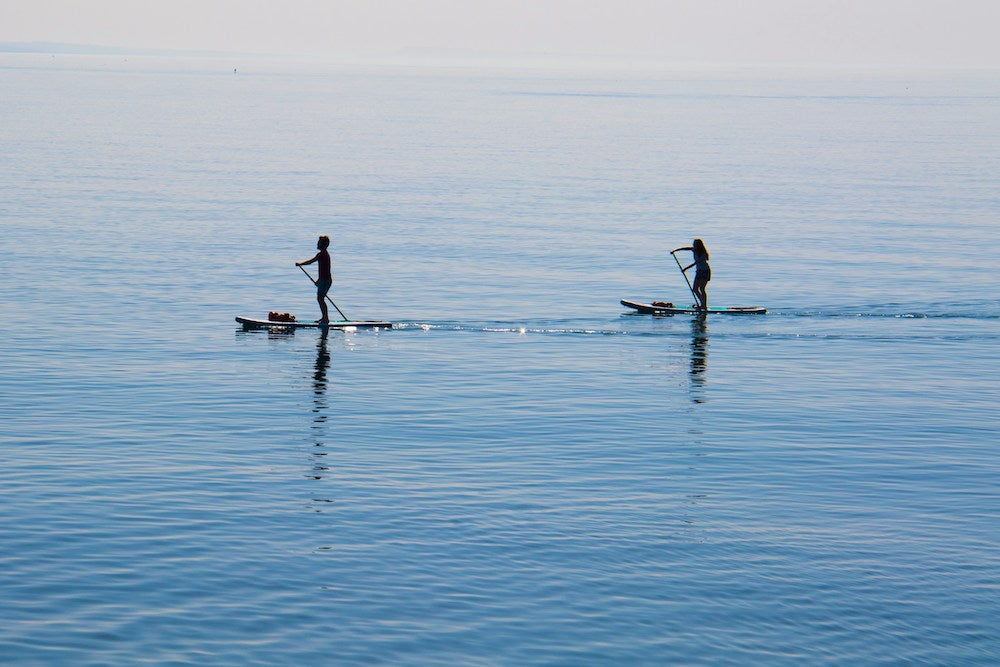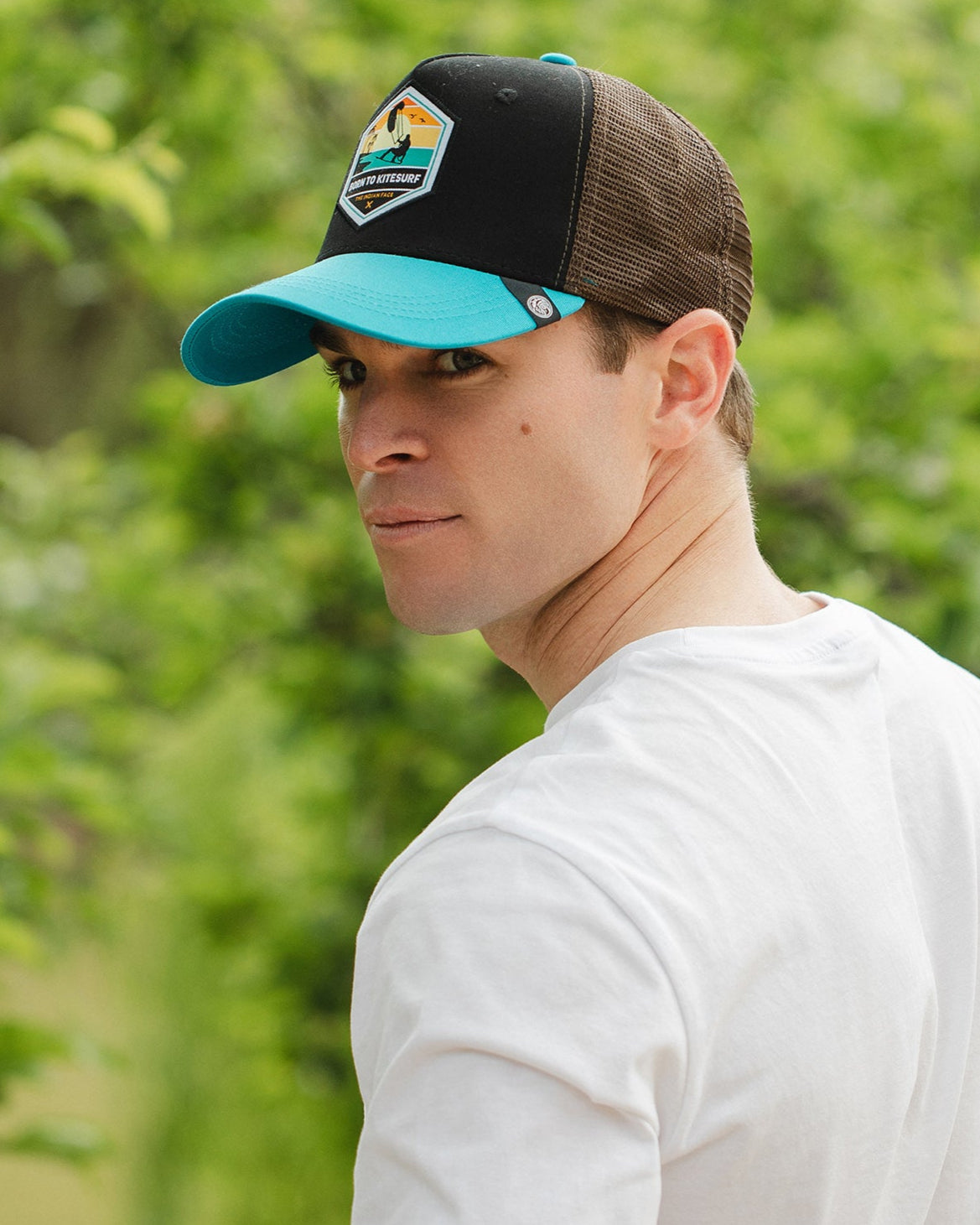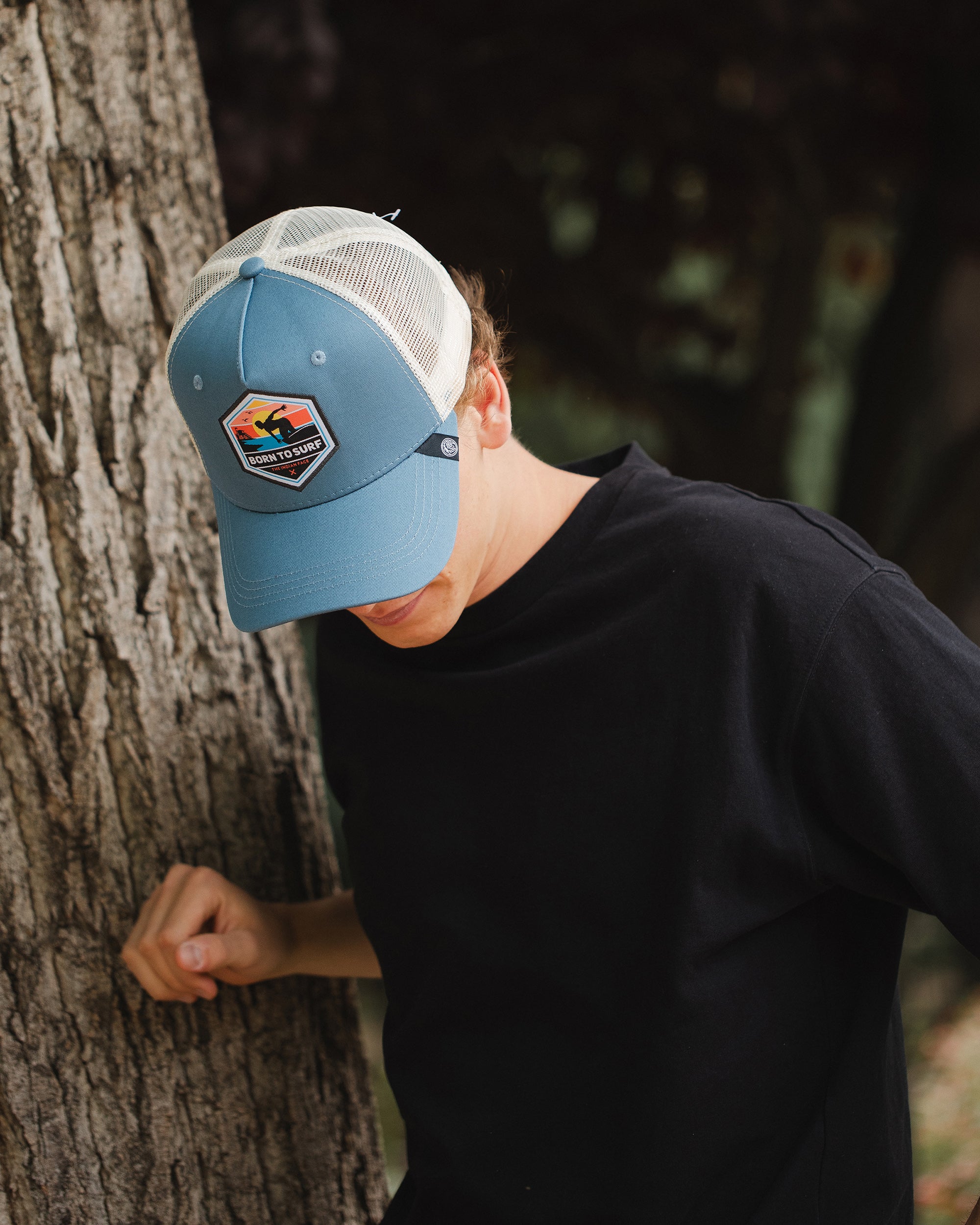paddle surfing, also known as stand up paddleboarding (SUP), is an exciting and engaging water activity that has gained popularity around the world. However, beyond the fun and excitement it offers, it is essential to address safety as a priority to ensure positive experiences in each session. In this article, we will explore the key elements of paddle boarding safety, from preparation before entering the water to emergency measures.
- Basic safety equipment:
Before venturing into paddle surfing, make sure you have the right equipment. Despite being a sport that is usually practiced in calmer environments, the ocean is unpredictable and the currents or tides of the water could play tricks on you. Therefore, it is essential to have a life jacket or a personal flotation device (PFD) such as an inflatable device that helps you float in the water in case of fatigue or need to rest in the water. Make sure you choose a DFP suitable for your paddle boarding needs and abilities. Even though you may be a competent swimmer, water conditions can change quickly, and a life jacket gives you an extra layer of safety. Additionally, you should ensure that these devices are adjusted correctly to ensure effective flotation.

- Weather and water conditions:
Before you hit the water, it's crucial to take a moment to check and understand the weather and water conditions in the area where you plan to paddle board. Wind, waves and tides can have a significant impact on your experience on the water and your safety.
Wind can affect the stability and direction in which you travel on your paddle board. If there are strong winds, you may find it difficult to maintain your balance or move in the desired direction. Additionally, crosswinds can make sailing even more challenging, especially for beginners.
Waves are also an important factor to consider. Large, breaking waves can pose a danger to stand-up paddleboarders, especially those who do not have experience riding waves. It is important to assess the size and strength of waves before venturing out on the water and avoid going out in extreme surf conditions if you do not feel safe.
Tides can also influence your paddle surfing experience. Tidal currents can affect the speed and direction of your movement in the water, and it is important to take the state of the tide into account when planning your paddle boarding session. Additionally, high tides can lead to more turbulent conditions in certain areas, while low tides can expose rocks and obstacles that can pose a hazard.
As a beginner, it is especially important to avoid going out in bad weather or rough water. Understanding the weather forecast and water conditions will help you make informed decisions about when and where to practice. Check reliable sources of weather and water information, such as weather forecast apps or specialized websites, and don't hesitate to postpone your session if conditions are unsafe.
- Knowledge of the environment
It is also important to become familiar with the environment in which you plan to paddle board to ensure a safe and enjoyable experience in the water. Before you set out on a paddle, take the time to explore and understand the area you are in. Identify currents, obstacles and potentially dangerous areas that may exist in the water.
Learning to read the waves is an important skill for any paddle surfer. Waves can provide valuable information about water conditions and how they will affect your experience on the water. For example, large, powerful waves may indicate rough waters and challenging conditions, while gentle, steady waves may suggest a calmer, beginner-friendly environment. However, it is always advisable to check the tides from reliable sources, since a calm sea can bring strong currents.

Understanding how waves interact with the seafloor and nearby geographic features can also help you anticipate and navigate safely. For example, waves may break harder in areas with rocky bottoms or at the mouth of a river, which may require greater attention and skill to avoid accidents.
- Navigation skills
Developing solid navigation skills is essential for paddle boarding safety. Learn to paddle efficiently and maintain balance in different conditions. Practice turning maneuvers and become familiar with how to deal with small and large waves. The more confident you are in your abilities, the more confident you will feel in the water.
- Communication and supervision
It is always advisable to practice paddle surfing with a partner, especially if you are a beginner. Maintain constant communication and establish signals to indicate any problems or need for help. If you are sailing alone, inform someone of your location and your plans so they can alert authorities in case of emergency.
- Emergency equipment
In addition to the life jacket or PFD, it is advisable to carry a basic emergency kit. This may include a signal whistle, a rescue rope, or the PFD itself. These elements can make a difference in emergency situations and ensure a quick and effective response.

- Training and awareness
Consider taking water safety and paddle surfing courses. These courses will not only provide you with practical skills, but will also increase your awareness of potential dangers and how to avoid them. Proper training can make the difference between a safe experience and a dangerous situation.
- Continuous risk assessment
Safety in paddle surfing is a continuous process of risk assessment. Constantly observe your surroundings and water conditions. If conditions change, adjust your approach and decide if it is safe to continue or if it is best to return to dry land. Flexibility and the ability to make informed decisions are essential for a safe experience.
Enjoy Paddle Surf safely
Immerse yourself in the experience of Paddle Surf with total safety and confidence. This exciting water sport offers the opportunity to connect with nature in a unique way, but it is always essential to prioritize safety on every outing. From choosing the right equipment to understanding water conditions and respecting the marine environment, there are several aspects you should consider to ensure an enjoyable and risk-free experience. Make sure you are well prepared before each session, familiarize yourself with rescue techniques and always maintain a conscious and respectful attitude towards the aquatic environment. Remember that safety is essential in any adventure, and paddle surfing is no exception. So, equip yourself properly, follow the safety recommendations and enjoy this exciting activity to the fullest while you glide over the waves with calm and confidence. May each paddle be synonymous with fun and safety at sea!
FREQUENTLY ASKED QUESTIONS ABOUT PADDLE SURF SAFETY
What should I do in case of an emergency situation in the water?
Keep calm and evaluate the situation. Use your emergency whistle to get the attention of others near you. If necessary, ask for help and follow the instructions of lifeguards or experienced people.
What are the safest weather conditions for paddle surfing?
The conditions of light wind, gentle waves and favorable tides are ideal for the safe practice of paddle surfing.
How can I protect myself from the sun while paddle surfing?
Wear waterproof sunscreen, a long-sleeved t-shirt, a hat, and sunglasses with UV protection to protect yourself from the sun.
What should I do if I find myself in a strong current or tide?
Keep calm and try to paddle towards a safer area or towards the coast. Avoid exhaustion by swimming against the current and seek help if necessary.

















































